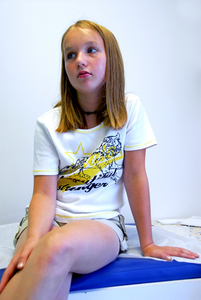When should girls start going to the gynecologist? The general consensus from the medical community and public health education is that a girl need not see a gynecologist until she becomes sexually active..I disagree.
Reproductive Care Should Begin with the First Period
Consider this; the average age of menarche in the United States is a little above 12 years of age. The average age a woman loses her virginity in the United States is 17. Based on what is taught in health class, that leaves 5 years of no reproductive care for the average American female. Although the average teenager may not need annual visits to the gynecologist, reproductive care should not be ignored. This means pediatricians must be better informed about gynecological care.
Just because a young girl is not sexually active does not mean her reproductive system does not exist. Amenorrhea, dysmenorrhea, endometriosis, polycystic ovarian syndrome and menorrhagia are all terms (or concepts) that young girls of reproductive age should be familiar with; and yet a majority of girls of reproductive age would not be able to identify any of these terms.
Abnormal Periods are a Sign of Trouble
Young girls should be taught that abnormal periods, painful periods (dysmenorrhea), an absence of periods (amenorrhea), or extremely heavy periods (menorrhagia) are not normal and should be evaluated by a doctor. In many cases, finding the causes of abnormalities in menstruation early on, could prevent further complications down the road.
Most women who have uterine or menstrual abnormalities do not get a diagnosis or proper treatment until they discover they cannot conceive. That is because by the time these women go to the gynecologist for the first time they have been lead to believe that abnormal is their normal.
My Story
When I was twelve I was getting my period every other week and I was told that was normal and that every girls’ period takes some time to regulate – which is true. However, it wasn’t true for me. I had endometriosis and uterine didelphys (two uteri) which required surgery, but because I was young, it was two and a half years before my painful periods were taken seriously. This is an all-too-common experience. Many women report suffering for decades.
In the case where a young girl’s menstrual problems are impacting her daily life – isn’t it better to be safe, rather than sorry? Read my full health story here.
The Need for Pediatric Gynecologists
Pediatricians and family doctors alike need to sit down with their female patients and have a detailed discussion about menstruation. No one should assume that health education in secondary schools is adequate to teach a young girl to stand up for her own reproductive care. The stigma of being too young (or not yet sexually active) to go see the gynecologist should be disregarded. Regardless of age, if any other part of the body wasn’t working one would go to the doctor to get it looked at; the same should go for the reproductive system.
How old were you at your first gynecologist appointment? When did your menstrual problems begin?










